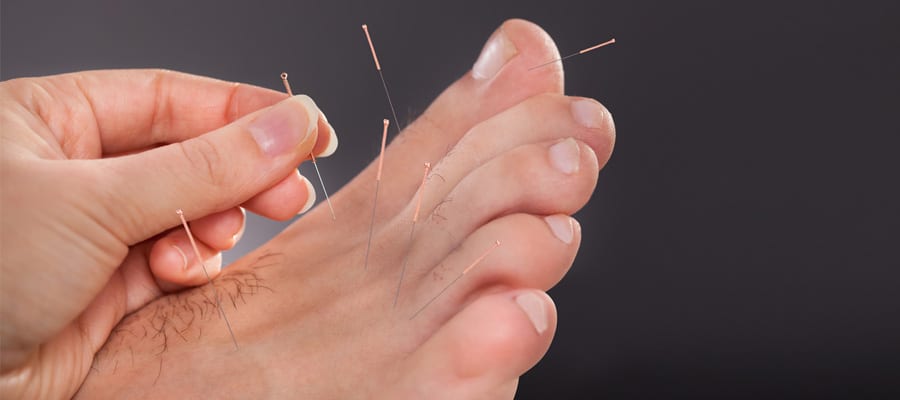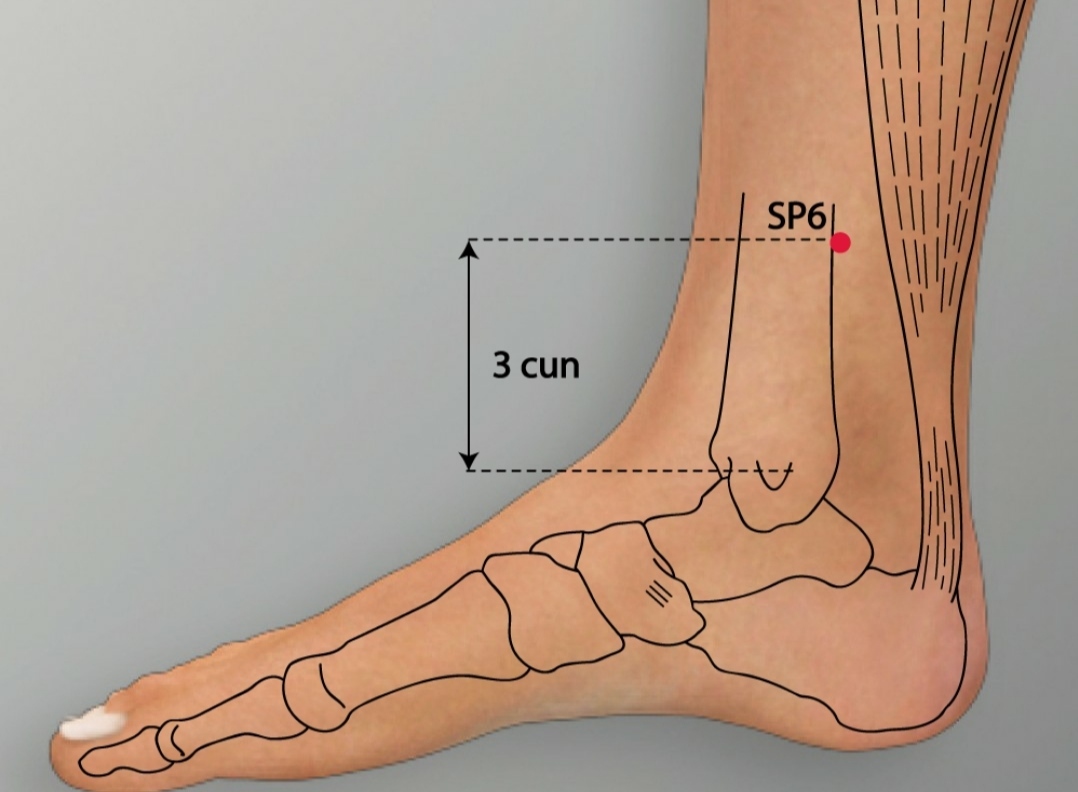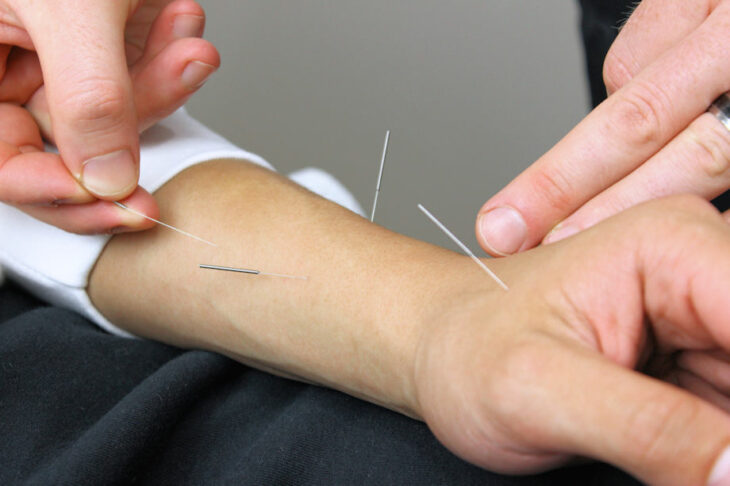Numbness in Hands and Feet and Acupuncture Treatment
Numbness in hands and feet is a common yet distressing symptom that can interfere with daily activities, from typing to walking. Often described as a tingling, “pins-and-needles” sensation or loss of feeling, numbness can stem from various causes, ranging from temporary nerve compression to chronic conditions like peripheral neuropathy. As people seek holistic and non-invasive treatments, acupuncture has emerged as a promising therapy for relieving numbness and restoring sensation. This article explores the causes, symptoms, and conventional treatments of numbness in hands and feet, with a deep dive into how acupuncture can help. We’ll also cover scientific evidence, practical tips, and complementary strategies for managing this condition effectively.
- Understanding Numbness in Hands and Feet
- Symptoms of Numbness in Hands and Feet
- Causes and Risk Factors
- Diagnosing Numbness in Hands and Feet
- Conventional Treatments for Numbness in Hands and Feet
- Acupuncture Treatment
- How Acupuncture Helps Numbness in Hands and Feet
- Common Acupoints for Numbness in Hands and Feet
- What to Expect During an Acupuncture Session
- Benefits of Acupuncture for Numbness in Hands and Feet
- Potential Risks and Considerations
- Acupuncture vs. Conventional Treatments: A Comparison
- Conclusion
Understanding Numbness in Hands and Feet
Numbness in hands and feet occurs when nerves that transmit sensory signals to the brain are impaired, compressed, or damaged. These nerves, part of the peripheral nervous system, relay information about touch, temperature, and pain. When their function is disrupted, it can lead to sensations of tingling, burning, or complete loss of feeling in the affected areas. While occasional numbness may be harmless (e.g., from sitting too long), persistent or recurring numbness warrants medical attention.
Maybe You Need:
Symptoms of Numbness in Hands and Feet
The symptoms of numbness can vary in intensity and presentation, often depending on the underlying cause. Common signs include:
- Tingling or “Pins and Needles”: A prickling sensation, similar to when a limb “falls asleep.”
- Loss of Sensation: Inability to feel touch, pressure, or temperature in the hands or feet.
- Burning or Pain: A warm or stinging sensation, sometimes accompanying numbness.
- Weakness: Difficulty gripping objects, writing, or walking due to reduced muscle control.
- Coldness or Discoloration: Affected areas may feel cold or appear pale, indicating circulation issues.
Symptoms may be intermittent or constant, unilateral (one side) or bilateral (both sides), and can worsen at night or during specific activities.

Causes and Risk Factors
Numbness in hands and feet can result from a wide range of conditions, each affecting the nerves or blood flow differently. Common causes include:
- Peripheral Neuropathy: Damage to peripheral nerves, often due to diabetes, chemotherapy, or alcohol use, leading to numbness, tingling, and pain.
- Carpal Tunnel Syndrome: Compression of the median nerve in the wrist, causing hand numbness, especially in the thumb, index, and middle fingers.
- Tarsal Tunnel Syndrome: Compression of the tibial nerve in the ankle, leading to foot numbness and tingling.
- Vitamin Deficiencies: Low levels of vitamin B12, B6, or folate can impair nerve function, causing numbness.
- Circulatory Issues: Poor blood flow from conditions like peripheral artery disease or Raynaud’s disease can reduce sensation.
- Nerve Compression: Herniated discs, sciatica, or repetitive strain injuries can pinch nerves, leading to numbness in extremities.
- Medical Conditions: Autoimmune diseases (e.g., multiple sclerosis, lupus), infections (e.g., Lyme disease), or hypothyroidism can trigger numbness.
- Lifestyle Factors: Prolonged sitting, repetitive motions (e.g., typing), or exposure to cold can temporarily cause numbness.
- Medications: Certain drugs, like chemotherapy agents or statins, may cause neuropathy as a side effect.
Risk factors include diabetes, obesity, smoking, repetitive motion occupations (e.g., office work, construction), and a family history of neurological conditions. Women are more prone to conditions like carpal tunnel syndrome, especially during pregnancy.
Diagnosing Numbness in Hands and Feet
Accurate diagnosis is crucial to address the root cause of numbness. A healthcare provider may:
- Review Medical History: Discuss symptoms, lifestyle, medications, and family history.
- Perform a Physical Exam: Test sensation, reflexes, and muscle strength in the hands and feet.
- Order Diagnostic Tests: These may include:
- Nerve Conduction Studies (NCS): Measure nerve signal speed to detect neuropathy.
- Electromyography (EMG): Assess muscle electrical activity to identify nerve damage.
- Blood Tests: Check for vitamin deficiencies, diabetes, or thyroid issues.
- Imaging: MRI or CT scans to detect structural issues like herniated discs.
- Skin Biopsy: For small fiber neuropathy, to assess nerve fiber density.
Early diagnosis helps tailor treatment and prevent progression, making complementary therapies like acupuncture for numbness in hands and feet a valuable option.

Conventional Treatments for Numbness in Hands and Feet
Conventional treatments focus on addressing the underlying cause, relieving symptoms, and preventing further nerve damage. Approaches vary based on the condition:
- Medications:
- Pain relievers (e.g., ibuprofen) for mild symptoms.
- Anticonvulsants (e.g., gabapentin) or antidepressants (e.g., duloxetine) for neuropathic pain.
- Corticosteroids to reduce inflammation in conditions like carpal tunnel syndrome.
- Physical Therapy: Exercises to improve strength, flexibility, and circulation in affected areas.
- Splinting: Wrist or ankle splints to relieve nerve compression, especially for carpal or tarsal tunnel syndrome.
- Surgery: For severe cases (e.g., carpal tunnel release or spinal decompression) to relieve nerve pressure.
- Lifestyle Changes: Managing diabetes, quitting smoking, or correcting posture to reduce nerve stress.
- Vitamin Supplements: B12 or folate supplements for deficiency-related neuropathy.
While effective, medications can cause side effects like drowsiness or nausea, and surgery carries risks like infection or incomplete relief. This has led many to explore acupuncture as a non-invasive alternative or complement.
Acupuncture Treatment
Acupuncture, a cornerstone of traditional Oriental medicine (TOM), involves inserting thin, sterile needles into specific points on the body, known as acupoints, along meridians—pathways believed to conduct energy. In TOM, numbness is often attributed to energy stagnation, blood deficiency, or blockages caused by dampness or cold. Acupuncture aims to restore energy flow, nourish tissues, and promote healing.
From a Western perspective, acupuncture stimulates the nervous system, releases endorphins, and improves blood flow. It may modulate pain signals, reduce inflammation, and enhance nerve repair, making it a promising therapy for numbness in hands and feet.
How Acupuncture Helps Numbness in Hands and Feet
Acupuncture for numbness in hands and feet addresses both symptoms and underlying causes through several mechanisms:
- Nerve Stimulation
Acupuncture may activate sensory nerves, improving signal transmission and reducing numbness. It can also promote nerve regeneration in cases of neuropathy by enhancing neurotrophic factors.
- Pain and Tingling Relief
By triggering endorphin release and modulating pain pathways in the brain, acupuncture alleviates burning, tingling, or discomfort associated with numbness.
- Reduced Inflammation
Inflammation from conditions like carpal tunnel syndrome or autoimmune diseases can compress nerves. Acupuncture regulates inflammatory cytokines, reducing swelling and relieving pressure.
- Improved Circulation
Poor blood flow can exacerbate numbness. Acupuncture enhances microcirculation, delivering oxygen and nutrients to nerves and tissues, supporting repair.
- Stress Reduction
Chronic stress can worsen neuropathic symptoms by increasing muscle tension and inflammation. Acupuncture’s calming effect on the nervous system reduces cortisol, improving overall symptom management.

Common Acupoints for Numbness in Hands and Feet
Acupuncture targets specific points on the body, called acupoints, to relieve numbness in hands and feet by improving nerve function, reducing pain, and enhancing circulation. Acupuncturists choose points based on the cause (e.g., peripheral neuropathy, carpal tunnel syndrome), location, and severity of numbness. Below is a clear overview of commonly used acupoints, their locations, and how they help address numbness in hands and feet. These points are often combined to target both local symptoms and underlying imbalances for optimal relief.
- LI4 (Hegu)
- Location: On the hand, in the webbing between the thumb and index finger. Pinch the thumb and index finger together; LI4 is at the highest point of the muscle bulge.
- Function: Part of the Large Intestine meridian, LI4 clears energy blockages, reduces pain, and boosts blood flow. In traditional Chinese medicine (TCM), it expels “wind” and “heat,” which can contribute to numbness.
- Benefits for Numbness: Relieves hand numbness and tingling, especially in carpal tunnel syndrome. It also eases pain and improves grip strength.
- Use: Often needled on both hands and paired with PC6 for hand-specific numbness or ST36 for systemic support.
- Note: Avoid in pregnancy, as LI4 may stimulate contractions.
- PC6 (Neiguan)
- Location: On the inner forearm, about two inches (three finger-widths) above the wrist crease, between the two tendons.
- Function: On the Pericardium meridian, PC6 regulates qi, calms the nervous system, and supports nerve health. It’s known for relieving upper body tension and discomfort.
- Benefits for Numbness: Reduces hand numbness, tingling, and stiffness, particularly in nerve compression conditions like carpal tunnel syndrome. It also soothes stress-related symptoms.
- Use: Commonly used with LI4 for hand numbness or combined with systemic points like SP6 for overall nerve support.
- Note: Safe and effective for most patients, with minimal discomfort during needling.
- ST36 (Zusanli)
- Location: On the lower leg, about four finger-widths below the outer edge of the kneecap, just outside the shinbone.
- Function: Part of the Stomach meridian, ST36 is a powerhouse point in TCM that boosts energy (qi), enhances circulation, and strengthens the body’s resilience. It supports nerve repair by nourishing blood and qi.
- Benefits for Numbness: Improves sensation in both hands and feet, making it ideal for peripheral neuropathy (e.g., from diabetes or chemotherapy). It also combats fatigue and supports recovery.
- Use: Often combined with SP6 for systemic nerve health or Baxie/Bafeng points for localized relief. Moxibustion (heat therapy) may be applied to enhance effects.
- Note: Deep needling may cause a mild ache, signaling effective stimulation.
- SP6 (Sanyinjiao)
- Location: On the inner lower leg, about four finger-widths above the inner ankle, just behind the shinbone.
- Function: On the Spleen meridian, SP6 nourishes blood, resolves dampness (a TCM cause of numbness), and harmonizes the spleen, liver, and kidney systems, which support nerve health.
- Benefits for Numbness: Enhances sensation in the feet, reduces tingling, and improves circulation, especially in neuropathy or tarsal tunnel syndrome. It also boosts overall vitality.
- Use: Paired with ST36 for systemic support or Bafeng points for foot-specific numbness. Acupressure can be used at home for maintenance.
- Note: Contraindicated in pregnancy due to potential uterine stimulation.

- GB34 (Yanglingquan)
- Location: On the outer lower leg, in a depression just below the knee, near the head of the fibula (the smaller bone).
- Function: On the Gallbladder meridian, GB34 relaxes tendons, reduces muscle tension, and promotes circulation in the lower limbs. It’s a key point for lower body mobility.
- Benefits for Numbness: Alleviates foot numbness and tingling, particularly from nerve compression or poor circulation. It also eases leg stiffness and cramping.
- Use: Often combined with SP6 or Bafeng points for foot numbness or ST36 for broader nerve support.
- Note: Precise location is key, as the point lies near a bone; skilled needling ensures comfort.
- Baxie Points
- Location: Extra points (not on a meridian) located on the hands, in the webbing between each finger (four points per hand, eight total). They are found just below the base of the fingers.
- Function: In TCM, Baxie points clear local blockages, improve blood flow, and directly target hand symptoms. They are specific to hand-related conditions.
- Benefits for Numbness: Reduces numbness, tingling, and pain in the hands, especially in peripheral neuropathy or repetitive strain injuries. They enhance local sensation.
- Use: Needled or massaged on affected hands, often paired with LI4 or PC6 for comprehensive hand relief.
- Note: Gentle acupressure on Baxie points can be done at home to complement professional treatment.
- Bafeng Points
- Location: Extra points on the feet, in the webbing between each toe (four points per foot, eight total). They are located just below the base of the toes.
- Function: Similar to Baxie, Bafeng points clear local qi stagnation, boost circulation, and address foot-specific symptoms in TCM.
- Benefits for Numbness: Relieves foot numbness, tingling, and coldness, particularly in neuropathy or tarsal tunnel syndrome. They improve sensation and warmth in the feet.
- Use: Needled or massaged on affected feet, often combined with SP6 or GB34 for enhanced foot relief.
- Note: Patients with sensitive feet may prefer acupressure over needling for comfort.
Acupuncturists rarely use a single point. Instead, they combine local points (near the numb area) with distal points (elsewhere on the body) to address both symptoms and root causes. For example:
- Diabetic Neuropathy: ST36 and SP6 boost systemic nerve health, while Baxie and Bafeng target hand and foot numbness directly.
- Carpal Tunnel Syndrome: LI4 and PC6 relieve hand numbness, with ST36 to improve overall circulation.
- Tarsal Tunnel Syndrome: SP6 and GB34 address foot numbness, paired with Bafeng for localized relief.
Complementary techniques, like electroacupuncture (mild electrical stimulation) or moxibustion, may enhance results, especially for chronic numbness. The treatment plan is tailored to the patient’s diagnosis, ensuring precise and effective care.
What to Expect During an Acupuncture Session
If you’re considering acupuncture for numbness in hands and feet, here’s what a typical session involves:
- Initial Consultation
The acupuncturist will assess your symptoms, medical history, and lifestyle. They may examine your hands, feet, tongue, or pulse to identify TOM patterns (e.g., energy deficiency or blood stagnation).
- Personalized Treatment Plan
Based on the cause of numbness (e.g., neuropathy, carpal tunnel), the acupuncturist selects acupoints to restore sensation, reduce pain, and improve circulation. For hand numbness, LI4 and PC6 are common; for feet, SP6 and GB34.
- Needle Insertion
Sterile, thin needles are inserted into chosen acupoints. Most patients feel minimal discomfort, often a slight pinch or tingling. Needles remain in place for 15–30 minutes while you relax.
- Complementary Therapies
To enhance results, practitioners may use:
- Electroacupuncture: Mild electrical pulses through needles to stimulate nerves, especially for neuropathy.
- Moxibustion: Applying heat to points like ST36 to boost circulation.
- Cupping: Suction cups on the back or limbs to improve blood flow.
- Follow-Up Sessions
Multiple sessions (6–12, weekly or biweekly) are typically needed. Chronic conditions like neuropathy may require longer treatment (3–6 months). The acupuncturist adjusts the plan based on progress.

Benefits of Acupuncture for Numbness in Hands and Feet
Acupuncture offers several advantages for managing numbness:
- Non-Invasive: Minimal risk compared to surgery or long-term medication use.
- Drug-Free: Avoids side effects like drowsiness or dependency.
- Holistic: Addresses symptoms and underlying imbalances, such as poor circulation or stress.
- Customizable: Tailored to specific causes, like neuropathy or nerve compression.
- Complementary: Enhances conventional treatments, such as physical therapy or vitamin supplementation.
Potential Risks and Considerations
Acupuncture is generally safe when performed by a licensed practitioner, but consider:
- Mild Side Effects: Temporary soreness, bruising, or fatigue may occur.
- Infection Risk: Rare with sterile needles. Choose a certified acupuncturist adhering to hygiene standards.
- Not a Cure: Acupuncture may not fully resolve numbness from severe nerve damage but can significantly reduce symptoms.
- Cost: Sessions may not be covered by insurance. Check with your provider for coverage options.
Seek a practitioner certified by the National Certification Commission for Acupuncture and Oriental Medicine (NCCAOM) to ensure safety and expertise.
In addition to acupuncture, these strategies can support recovery and prevent numbness recurrence:
Nutrition for Nerve Health
A nutrient-rich diet supports nerve repair:
- Vitamin B12: Found in fish, eggs, and fortified cereals, essential for nerve function.
- Omega-3 Fatty Acids: In salmon, walnuts, and flaxseeds, reduce inflammation.
- Antioxidants: Berries, spinach, and nuts protect nerves from oxidative stress.
- Magnesium: In leafy greens and almonds, supports nerve signaling.
Exercise and Stretching
Gentle exercises improve circulation and reduce nerve compression:
- Hand Stretches: Flex and extend fingers to relieve carpal tunnel symptoms.
- Foot Exercises: Toe curls or ankle rotations to enhance blood flow.
- Yoga: Poses like downward dog improve flexibility and circulation.
Ergonomic Adjustments
Optimize your workspace or activities:
- Use ergonomic keyboards or wrist rests for hand numbness.
- Wear supportive shoes to reduce foot pressure.
- Take breaks to avoid repetitive strain.
Stress Management
Chronic stress exacerbates numbness. Practices like meditation, deep breathing, or tai chi complement acupuncture’s calming effects.
Hydration and Circulation
Drink water to support nerve function. Avoid tight clothing or prolonged immobility to maintain blood flow.
Acupuncture vs. Conventional Treatments: A Comparison
Here’s how acupuncture compares to standard treatments for numbness:
| Treatment | Pros | Cons |
| Acupuncture | Non-invasive, holistic, minimal side effects, improves circulation | Requires multiple sessions, cost may not be covered |
| Medications | Quick symptom relief, effective for neuropathic pain | Side effects like drowsiness, risk of dependency |
| Physical Therapy | Improves strength and mobility, non-invasive | Time-intensive, may not fully resolve numbness |
| Surgery | Relieves severe nerve compression, long-term relief | Invasive, recovery time, risks like infection |
| Supplements | Addresses deficiencies, supports nerve health | Slow results, requires medical supervision |
Acupuncture stands out for its balance of safety and efficacy, especially for those seeking natural relief.

Conclusion
Numbness in hands and feet can disrupt daily life, but acupuncture offers a holistic, non-invasive solution to relieve symptoms and address underlying causes. By stimulating nerves, reducing inflammation, and improving circulation, acupuncture for numbness in hands and feet can restore sensation and enhance well-being. When combined with nutrition, exercise, and medical care, it forms a powerful strategy for managing this condition.
Consult a licensed acupuncturist to develop a personalized plan, and coordinate with your healthcare provider for comprehensive care. With the right approach, you can regain control and enjoy life without the burden of numbness.
You need acupuncture treatment for Numbness in hands and feet? Contact Fuji Wellness now!
Fuji Wellness:
- Address: 132-0031 Matsushima 1-chome, 21-14, Tokyo, Japan
- Chat with us: Click here
- Email: sunnyphamsensei@gmail.com









